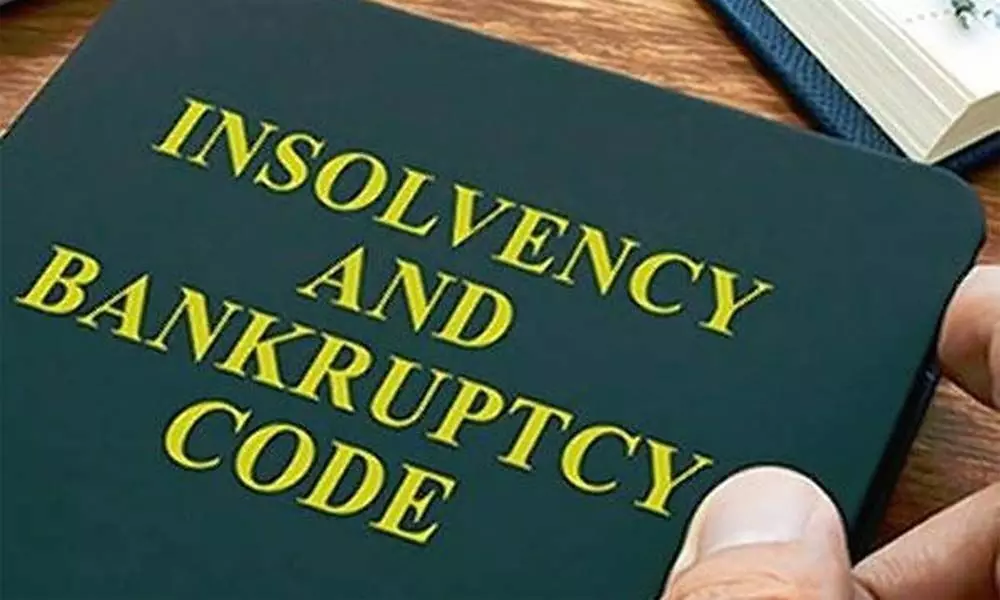How bankruptcy logjam turning India into no country for dying firms
Creditors are balking at 90% haircuts, and bailout funds are disillusioned with everything from long delays in admitting cases by tribunals to a chronic shortage of judges
image for illustrative purpose

A telecom carrier and a retailer are showing a mirror to India's tryst with assisted corporate demise and rebirth. The image staring back is one of defeat snatched from the jaws of victory. As the five-year-old bankruptcy experiment flounders, blame it on what development scholars refer to as 'isomorphic mimicry': Emerging economies ape the form of successful Western institutions but leave them dysfunctional and devoid of content, almost guaranteeing their failure.
Global investors were genuinely excited by India's 2016 insolvency law, hoping to profit from the Rs19 trillion ($260 billion) of bad loans, including those written off by banks in the last eight years. Initial success in finding new homes for distressed steel plants raised hopes that the savings-starved economy would extricate valuable capital from failed ventures. But now, creditors are balking at 90 per cent haircuts, and bailout funds are disillusioned with everything from long delays in admitting cases by tribunals to a chronic shortage of judges.
Large, indebted businesses continue to turn into zombies. Absent a miracle, Vodafone Idea Ltd. can't possibly repay the $30 billion the unprofitable wireless firm owes the government and banks. Future Retail Ltd. was hoping to stay afloat by selling assets to Mukesh Ambani's bigger empire. But Amazon.com Inc., from which Future's founder Kishore Biyani had taken money after promising to not sell out to India's richest man, has legally blocked the deal. Unless Biyani and Amazon can strike a compromise, the pandemic-battered firm's survival looks iffy.
Corporate death is a feature of capitalism, not a bug. India copied the British playbook of putting creditors in charge of insolvent firms. Debtors can initiate in-court bankruptcy proceedings, or lenders can pull the plug. On paper, everything looks fine. But if the institution was actually working to its intended purpose, India Inc. wouldn't still be grappling with large enterprises that are both living and dead - just like the fabled cat in quantum physicist Erwin Schrödinger's thought experiment.
There's no easy answer to what's gone wrong. As BloombergQuint says, Vodafone Idea is reluctant to file. The experience of other bankrupt phone networks doesn't inspire confidence that it will be allowed to retain its licenses in insolvency. Without them, the carrier with 255 million subscribers is worth very little. Having recently extended the maturity of Future's $1.4 billion of onshore debt, banks are wary of the loan-loss provisions they'll have to make by dragging it to a bankruptcy tribunal. It's a Catch-22: Recoveries could be dismal later. Last week, Future paid the coupon on its offshore bonds within the 30-day grace period. However, the notes are still trading at about 60 cents to the dollar.
No two bankruptcies are the same, but India's processes for handling them have some common deficiencies. Across the country, 27 tribunals are being run by 29 judges; at least 25 short of what's required. Many have no experience in financial matters. One judge, MB Gosavi, sits on four benches. Cases from Noida, a suburb of Delhi where big builders have defaulted to homebuyers, land before a single tribunal member 300 miles away. The insolvency courts also adjudicate unrelated matters under the Companies Act, overwhelming an already strained system.
Delays abound, not just in approving a sale or liquidation in 270 days as the law proposed originally (the time limit was later increased to 330 days), but even in admitting cases to start the clock. Punjab National Bank has tried in vain since November 2018 to put Indian Steel Corp. into bankruptcy. KKR & Co's India unit moved against Sintex-BAPL Ltd. a year ago. But an operational creditor came up with its own petition against the auto parts maker, settled with it, and the firm exited bankruptcy. KKR's application was finally admitted only last month. Leaving aside the top nine bankruptcies initiated in 2017 at the central bank's behest, creditors' recovery rate has been just 24 per cent, according to Macquarie Research.
The current corporate landscape is a colonial legacy. A handful of British managing agencies used to hold sway over large swathes of productive assets with very little capital. The agencies, which came to be controlled by Indian business families, were outlawed in 1969, but a heavily state-dominated banking system still allows empire-building by politically connected debtors on a sliver of loss-absorbing equity. When government-owned banks lose money, taxpayers fill the hole.
The power imbalance and the perverse incentives were known when parliament legislated the bankruptcy law. So lawmakers packed it with creditor-friendly features. But then came the inevitable pushback. Politicians, who have to contest expensive elections with corporate donations, simply lost their nerve for tough love. Urjit Patel, the previous central bank governor who sought to make large borrowers more accountable by ending banks' evergreening of soured loans, failed and quit abruptly.
It's still not too late to turn the bankruptcy regime into a real institution. Maybe it will happen only once the state is no longer a dominant player in the lending market. But even awaiting bank privatization, procedural infirmities can be fixed relatively easily if politicians want to put a stop to misallocation of capital. Perhaps they don't. As economist Lant Pritchett and others have noted, isomorphic mimicry is a great technique for ensuring persistent, successful failure. (Bloomberg)


